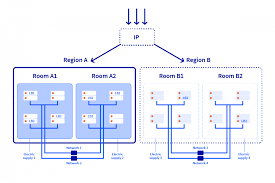-
- Advanced Load Balancing Techniques for Multi-Region VPS Clusters
- Understanding Load Balancing
- Configuration Steps for Multi-Region Load Balancing
- Step 1: Choose the Right Load Balancer
- Step 2: Set Up Your VPS Clusters
- Step 3: Configure DNS for Global Traffic Management
- Step 4: Implement Health Checks
- Step 5: Configure Load Balancing Algorithms
- Step 6: Monitor and Optimize
- Practical Examples
- Best Practices for Multi-Region Load Balancing
- Case Studies and Statistics
- Conclusion
Advanced Load Balancing Techniques for Multi-Region VPS Clusters
In today’s digital landscape, ensuring high availability and optimal performance of applications is paramount. As businesses expand globally, the need for efficient load balancing across multi-region Virtual Private Server (VPS) clusters becomes increasingly critical. This guide delves into advanced load balancing techniques that can enhance the performance, reliability, and scalability of your applications across different geographical locations.
Understanding Load Balancing
Load balancing is the process of distributing network traffic across multiple servers to ensure no single server becomes overwhelmed. This not only improves response times but also enhances fault tolerance and redundancy. In a multi-region setup, load balancing becomes even more complex due to varying latencies and potential regional outages.
Configuration Steps for Multi-Region Load Balancing
Step 1: Choose the Right Load Balancer
Select a load balancer that supports multi-region deployments. Popular options include:
- AWS Elastic Load Balancing
- Google Cloud Load Balancing
- NGINX Plus
- HAProxy
Step 2: Set Up Your VPS Clusters
Deploy VPS instances in multiple regions. Ensure that each instance is configured identically to maintain consistency. For example, if using AWS, you can deploy instances in different availability zones within a region.
Step 3: Configure DNS for Global Traffic Management
Utilize a DNS service that supports geo-routing, such as AWS Route 53 or Cloudflare. This allows you to direct users to the nearest VPS cluster based on their geographic location.
aws route53 create-hosted-zone --name example.com --caller-reference unique-stringStep 4: Implement Health Checks
Set up health checks to monitor the status of your VPS instances. This ensures that traffic is only directed to healthy instances. For example, in AWS, you can configure health checks in your load balancer settings.
aws elbv2 create-target-group --name my-targets --protocol HTTP --port 80 --vpc-id vpc-12345678Step 5: Configure Load Balancing Algorithms
Choose an appropriate load balancing algorithm based on your application needs. Common algorithms include:
- Round Robin
- Least Connections
- IP Hash
Step 6: Monitor and Optimize
Regularly monitor the performance of your load balancer and VPS instances. Use tools like Prometheus or Grafana for real-time monitoring and analytics. Adjust configurations based on traffic patterns and performance metrics.
Practical Examples
Consider a global e-commerce platform that experiences high traffic during sales events. By implementing a multi-region VPS cluster with load balancing, the platform can:
- Direct users to the nearest server, reducing latency.
- Automatically reroute traffic in case of server failure.
- Scale resources dynamically based on demand.
Best Practices for Multi-Region Load Balancing
- Ensure data consistency across regions using database replication techniques.
- Implement SSL termination at the load balancer to offload encryption tasks from VPS instances.
- Utilize CDN services to cache static content closer to users.
- Regularly test failover scenarios to ensure reliability.
Case Studies and Statistics
A study by Google Cloud found that companies using multi-region load balancing experienced a 30% reduction in latency and a 25% increase in application availability. For instance, a financial services company implemented a multi-region strategy and reported a 40% improvement in transaction speeds during peak hours.
Conclusion
advanced load balancing techniques for multi-region VPS clusters are essential for businesses aiming to provide seamless user experiences across the globe. By following the outlined configuration steps, leveraging practical examples, and adhering to best practices, organizations can significantly enhance their application performance and reliability. As you implement these strategies, remember to continuously monitor and optimize your setup to adapt to changing traffic patterns and user demands.
